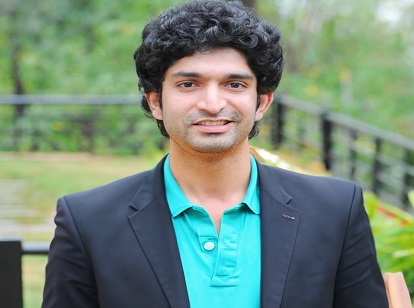Great Expectations: Anticipating the Impacts of the 2024 Education Budget
 Er. Koneru Lakshman Havish is an Engineering graduate from Purdue University in the United States. Beyond his academic achievements, he is recognized as an entrepreneur, philanthropist, and prominent figure in the South Indian film industry, contributing as both an actor and producer.
Er. Koneru Lakshman Havish is an Engineering graduate from Purdue University in the United States. Beyond his academic achievements, he is recognized as an entrepreneur, philanthropist, and prominent figure in the South Indian film industry, contributing as both an actor and producer.
The Indian education sector is a crucial building block in the growth and progress of our nation. It strives to cultivate human potential, drive innovation, and advance socio-economic development. As the 2024 budget approaches, there is a tangible sense of anticipation, especially within the education realm. The significance of this budget for education cannot be emphasized enough, as it holds immense weight in shaping our country's future.
Over the years, the budget allocation trend for education has been highly favourable, with a notable increase. In the most recent budget, FY 2023-24, the education sector received a historic allotment of INR 1.12 lakh crore, representing the highest funding level to date. This significant investment aims to tackle crucial challenges such as skill development, teacher shortages, and infrastructure improvements,paving the way for a brighter educational landscape.
Overview of Past Budgets
The National Education Policy of 2020 suggested that 6% of the country's GDP should be spent on education. This policy also aimed to improve education in a holistic way, make it inclusive, and create a skilled workforce.Over the years, the budget allocation in the education sector has witnessed a remarkable trend. From INR 68,728 Cr in FY 2014 to INR 1,12,899 Cr in FY 2023, INR 68,804 crore was allocated for school education, INR 44,094.62 crore was allocated for higher Education and INR 37,453 crore was earmarked for the Samagra Shiksha Abhiyan (SSA). Prominent educational welfare schemes like Eklavya Model Residential Schools and Skill India Program were also developed to address the diverse educational challenges.
The government's thoughtful allocation of funds for education shows its dedication to addressing the crucial needs of the education sector. Its objective is to build a robust education system in India through a comprehensive strategy. Programs like the Higher Education Funding Agency (HEFA) and the Study in India initiative have been created to enhance the quality of education in the country.
Key Educational Welfare Schemes
Eklavya Model Residential Schools
The government’s vision to make education accessible to nooks and corner of the country promoted the development of Eklavya Model Residential School scheme (EMRS). EMRS was developed by National Education Society of Tribal Student to provide free education to ST children from class VI to XII in residential set up. The aim is to provide quality modern education – including a strong component of inculcation of values, awareness of the environment, adventure activities and physical education – to the talented tribal children predominantly from the rural areas without regard to their family's socio-economic condition.
SamagraShikshaAbhiyan
SamgraShikshaAbhiyan is a comprehensive program that encompasses all levels of education from pre-nursery to 12th grade. In the budget for FY 2023-24, INR 37,453 Cr was allocated to this initiative with the aim of enhancing overall school performance in terms of providing equal educational opportunities and promoting equitable learning outcomes. This program is comprised of three distinct schemes: Sarva ShikshaAbhiyan (SSA), RashtriyaMadhyamikShikshaAbhiyan (RMSA), and Teacher Education (TE).
The scheme aims to improve system-level performance and schooling outcomes. Samagra Shiksha Abhiyan seeks to ensure that all boys and girls complete free, equitable and quality primary and secondary Education, leading to relevant and effective learning outcomes, eliminating gender disparities in Education and ensuring equal access to all levels of Education and vocational training for the vulnerable, including persons with disabilities, indigenous peoples and children in vulnerable situations by 2030. The anticipated increase for FY2024-25 will further strengthen the foundation of Education by creating more opportunities for quality education.
Skill India Program
The skill India Program was created to unlock human capital to trigger a productivity dividend and bring aspirational employment and entrepreneurship pathways to all. Ministry of Skill Development and Entrepreneurship develops the Skill India program. MSDE, through the Skill India Program, aims to adopt an ecosystem-enabling lens to transition India to a high-skills equilibrium and help create positive outcomes for individuals, enterprises and the economy. The specific allocation of INR 2,278 Cr in FY 24 to the Skill India Program bolsters the government's efforts to equip the youth with the required skills and enhance employability. The imperative to develop youth skills and employability is strategically aligned to put India as a global player in the skilled workforce stage.
A Promising Outlook for the Education Sector
The upcoming FY 2024-25 budget is poised to be a boon for the education sector. Notably, the budget has consistently shown impressive investment in education and is expected to continue this trend. This reflects the government's strong commitment towards promoting holistic and high-quality education. Through various policies and schemes, the government is determined to establish a comprehensive educational system that addresses crucial aspects like skill development, workforce training, and infrastructure enhancement. Ensuring education accessibility nationwide is a pivotal step in creating equal opportunities and enhancing the skills of our youth, ultimately contributing to economic growth.

